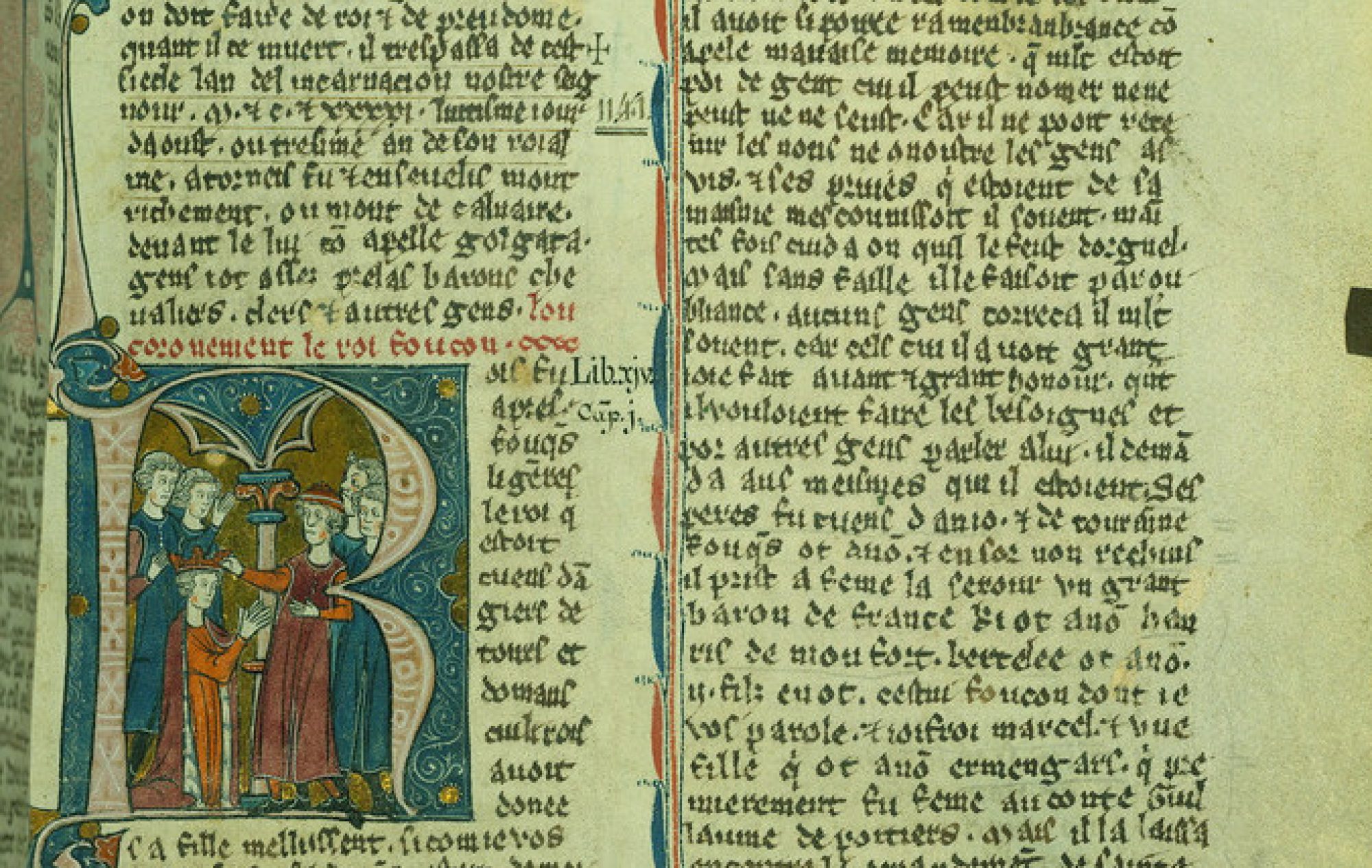Knowledge of the East-West Schism, also known as the Schism of 1054, is important to understand the relations between the characters of Prester John and Prince Emanuel of Constantinople.
During the eleventh century, Chalcedonian Christians—those who adhere to the decisions of the Council of Chalcedon (present-day kadiköy, Turkey)—had difficulty finding common ground.1 Western and Eastern Chalcedonians had a variety of spiritual and practical differences, such as how bread should be prepared for communion (unleavened or leavened), or whether the pope should have authority over the patriarchs (leaders) in the east.2 In July of 1054, due to their differences, patriarch of Constantinople Michael Cerularius was excommunicated from the Christian Church, which was at that time based in Rome.3 This led to a split in Christianity: a separation into what is known today as the Roman Catholic and Eastern Orthodox churches. At that time, the Eastern Orthodox Church was also known as the Byzantine Church. The Byzantine Church was headquartered in Constantinople (present-day Istanbul, formerly a Greek colony known as Byzantium), and was led by the city’s patriarch; it was also considered the Byzantine Empire.4 Today, the Eastern Orthodox Church is no longer headquartered in what was Constantinople, but is decentralized.5

Significance of Schism
The divide of Christian churches caused by the Schism of 1054 meant that animosity between the two sides continued, and was a significant point in the political rivalry between them. Within the letter of Prester John, Prince Emanuel of Constantinople is referred to as “his friend”, and Prester John wishes “health, prosperity, and the continuance of Divine favour.”6 Furthermore, he writes of gifts received from the Prince, and how in return his kingdom will send gifts also; it is also mentioned that “we desire to be made certain that you hold the right faith”.7
While at face-value this letter may appear to be one of goodwill, with the knowledge thatPrester John supports the Roman Catholic Church (not to mention is a Nestorian, see: Major Players) and Prince Emanuel is the patriarch of the Byzantine Empire, thus, leader of the Byzantine Church, the reader can see that perhaps the two are not close friends as the letter implies, but in fact political rivals.
- Richard Price and Michael Gaddis, eds, The acts of the Council of Chalcedon, vol. 45 (Liverpool, England: Liverpool University Press, 2005), 31.
- Earle E. Cairns, Christianity through the centuries: A history of the Christian church, (Michigan: Zondervan, 1996), 190.
- Ibid.
- Alexander Schmemann, The historical road of eastern orthodoxy (London, England: Harvill Press, 1963), 125.
- Ibid, 126.
- Sabine Baring-Gould, Curious Myths of the Middle Ages (London, England: Rivingtons, 1876), 37.
- Ibid, 40.
- Smith. Expansion of Christianity. 1915. Atlas of the Historical Geography of the Holy Land, London, https://commons.wikimedia.org/wiki/File:Expansion_of_christianity.jpg.
